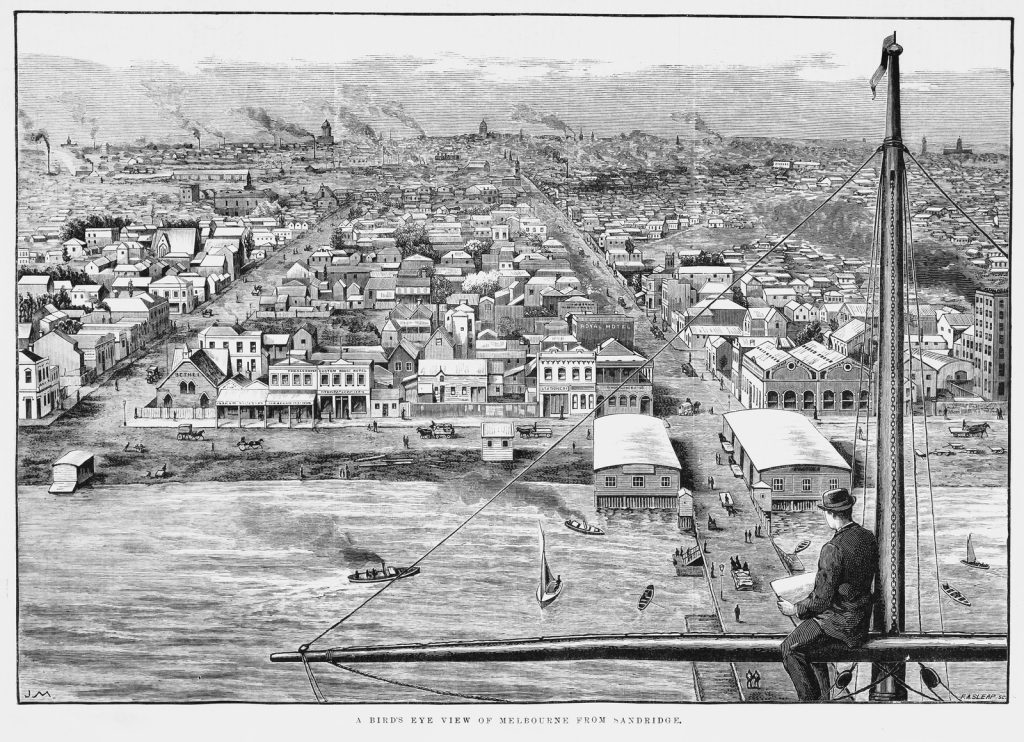
It was just a few short sentences in the 1891 census report, but the implications for genealogists were profound:
‘Applications were… made by police… to search the schedules for names, but these were… refused. To avoid a recurrence of such requests… the schedules were sent to a paper mill and reduced to pulp.’ 1
And so it was that the hopes and dreams of generations of family historians, eager to learn the details of their ancestors, were dashed.
Researchers visiting State Library Victoria are often dismayed when they discover that there are no surviving census returns for individuals in the Colony of Victoria 2 from 1854 up until 2001.
And it’s not just Victoria’s census records that have gone. Historically, many records of individuals in Australia were either lost or deliberately destroyed for privacy reasons, prompting prominent genealogist Nick Vine Hall to lament back in 2003:
Some millions of Australian residents have come and gone like burnt out candles, to be forgotten by history, as if they never existed.3
Many wonder: how could this have been allowed to happen?
In order to understand the fate of Victoria’s historic census records, it’s helpful to take a look at their origins.
Nascent population counts of Australia were called musters, the earliest of which was in 1788.4 Musters involved all inhabitants of the colony gathering at a certain time and place so they could be counted by colonial officials. The aim was to ensure that there was enough food and other supplies to cater for the population.5
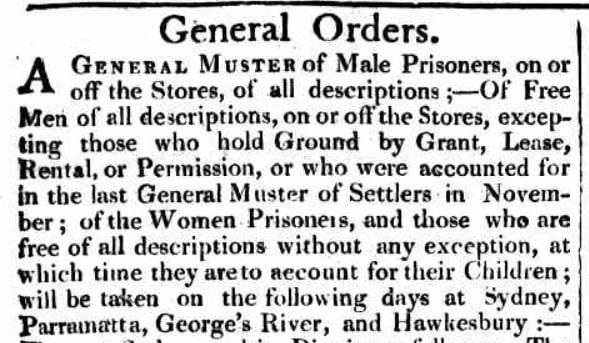
Musters were eventually abandoned, and the first colonial census was held in 1828. According to the legislation, its purpose was to establish:
… the Number Names and Condition of the Inhabitants of the Colony of New South Wales and also the Number of Cattle and the Quantity of located cleared and Cultivated Land within the said colony. 6
At that time, the Colony of New South Wales included all of mainland eastern Australia (including what are now known as the states of Queensland, New South Wales and Victoria) and Norfolk Island, but not Van Diemens Land (ie Tasmania). 7
The census counted most of the colony’s 36,500 convict and free settlers but excluded Indigenous peoples and members of the military establishment. 8
Magistrates were asked to place notices in prominent places in their districts ‘requiring every householder employer of servants owner or possessor of cattle proprietor or occupier of land’ to answer questions relating to the population and land and stock of the Colony. 9
Individuals refusing or neglecting to answer questions in the census, or who gave false or untrue answers, would be fined an amount ‘not exceeding Ten Pounds’.10
Whilst musters required people of a certain type (eg free men or convicts) to gather at a certain place and time to be counted, Australia’s first census was less prescriptive. Constables or other suitable census collectors called on householders’ properties with the census forms and asked the inhabitants to fill them out. The completed forms were then returned to the Colonial Secretary as soon as was practicable.11
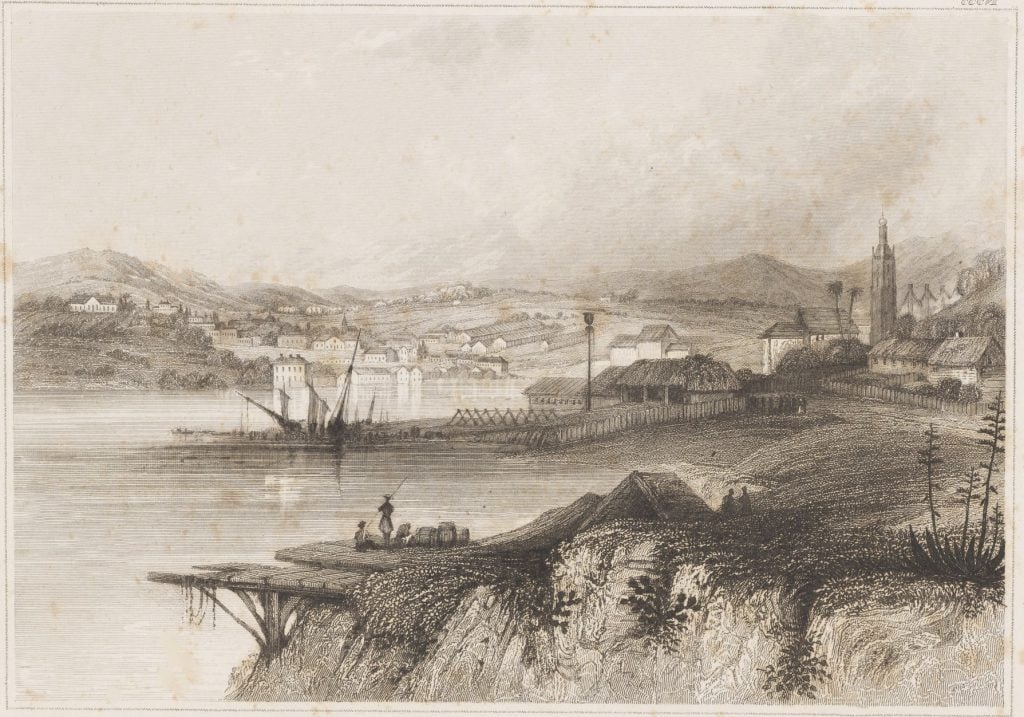
Aside from an individual’s name and street address, the 1828 census recorded details including: their age, whether they were free or a convict, whether they were born in the colony and if they weren’t, the ship they came out on and the year of their arrival, their sentence if they arrived as a convict, as well as ‘religion, employment, residence, district, total number of acres, acres cleared, acres cultivated, horses, horned cattle, sheep, remarks’.12
Little wonder that genealogists are so keen to get their hands on it!
Fortunately, the results of the 1828 census were kept, and today, you can find them on the Museums of History New South Wales website.
Subsequent census records were not so lucky.
In 1882, a fire destroyed the New South Wales census records for 1846, 1851, 1856, 1861, 1871 and 1881, including the detailed household forms from 1861, 1871 and 1881. 13
The fate of records in other states and territories has been equally dismal. In Western Australia, there are no surviving records for individuals after 1837, in Queensland and South Australia after 1841, for Tasmania after 1857, and for the Northern Territory, there are no records for individuals past 1921.
There are some surviving records in Victoria from the years prior to separation from New South Wales, 14, but typically, they only name the head of the household, rather than everyone living at a particular address. There are no historic Victorian census records for individuals from 1854 onwards until the year 2001.
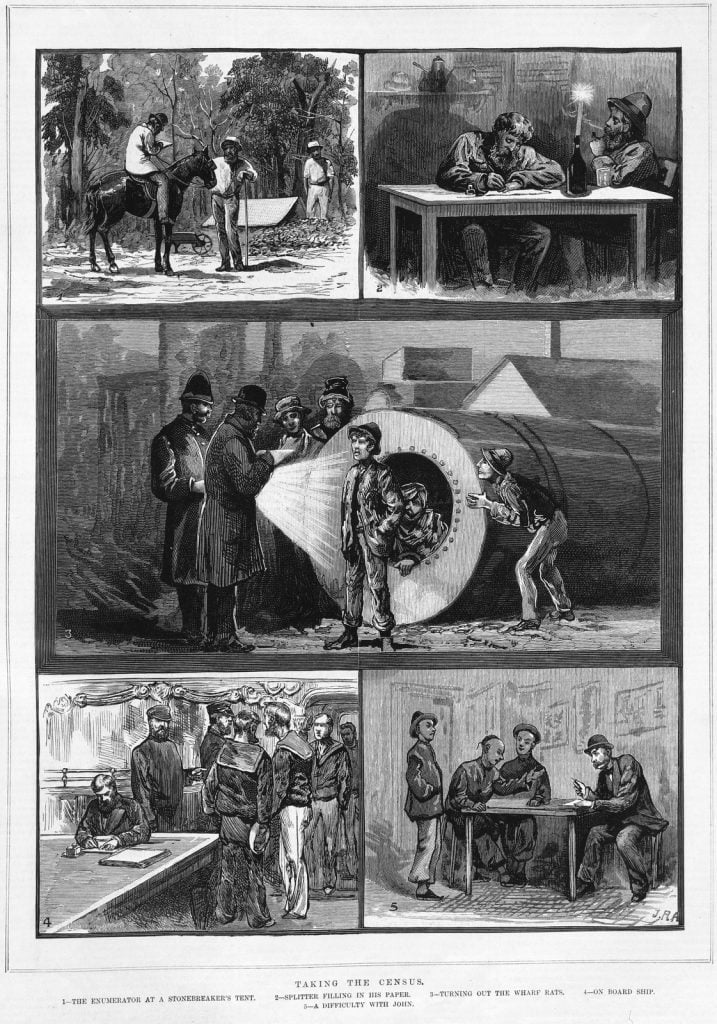
There were several reasons behind Australia’s policy of destroying census records.
The first centred around the purpose of the census, which was to gather statistical data about population and housing, rather than information about individuals. 15 Once this purpose had been achieved, it was thought preferable to destroy the records of individuals than to keep them, leaving them vulnerable to misappropriation. 16
The argument that destruction was necessary for privacy protection was not popular with some archivists. 17 As the Director General of the National Archives of Australia (NAA) stated:
…the Archives does not accept that the only way to preserve privacy is to destroy public records. To accept this proposition would fly in the face of all we and other archives practise. 18
It was also thought that a policy of destruction reassured the public that the census was confidential, making them more likely to answer the questions honestly. 19
There were also claims that census records were destroyed so as to hide the convict ancestry of individuals anxious to avoid the ‘convict stain’. 20
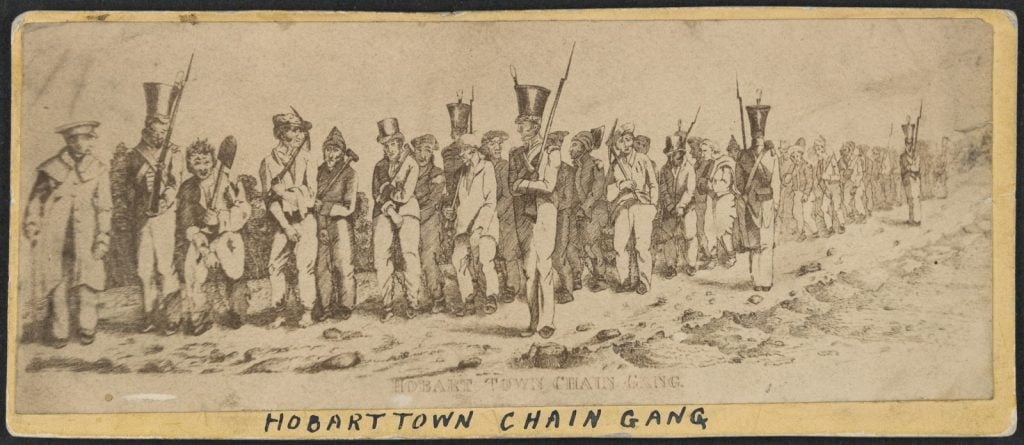
Fortunately, Australia’s family historians (known colloquially as the ‘genies’)21 took up the cause, launching a decade-long campaign to save the census. A Census Working Party was formed, and letters and representations were made to every federal politician. Politicians’ names were published in family history newsletters, along with their stance for or against the census.22
As the campaign grew, the politicians began to sit up and take notice, until finally in 1997, Federal Treasurer Peter Costello announced a parliamentary enquiry. 23
The Australian Bureau of Statistics (ABS) mounted a spirited defence of its policy of destruction, 24 arguing that retention would lead to privacy concerns, and ultimately, a decline in participation rates. It also contended that people would answer the questions less honestly, leading to poorer overall census data.25
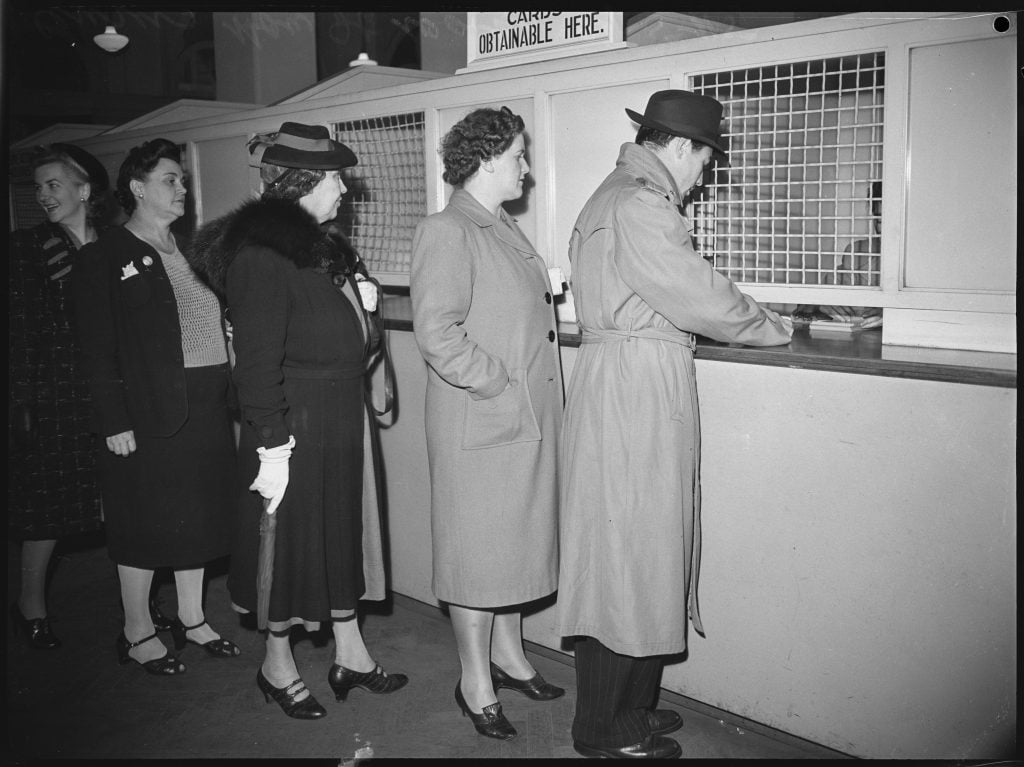
The genies, on the other hand, argued that most people didn’t even know their forms were being destroyed, so the change would have little impact on response rates. 26 Some even suggested that participation might go up, because they can see some long term point to the census. 27 They also argued that most people would still fill their forms out because they were law-abiding citizens, and that a media campaign could address any privacy concerns. 28
In the end, it was the genies who won the day.
From 2001 onwards, the census has included an option for people to grant permission for their personal details to be kept. For those who agree, their records are kept securely for a period of 99 years, before being released to the public for research purposes. 29
It was a victory for the ‘genies’ who had campaigned so hard, and for generations of researchers in the years to come.
Further reading
Hull, T H, 2007, ‘The strange history and problematic future of the Australian census’, Journal of Population Research, Canberra, ACT, vol 24(1), pp 1-22
Mutch, Stephen, 2002, ‘Public policy revolt: saving the 2001 Australian census’, Archives and Manuscripts, vol 30, no 2, pp 26-44
Piggott, Michael, 1998, ‘Statistics versus history: the destruction of census forms -versus their retention’ (PDF), Current Affairs Bulletin, vol 74 (6)
Vine Hall, Nick, 2003, ‘Saving the Census – a thirty year battle’, Ancestor, vol. 26, no. 8, The Society, Melbourne, pp 12-13
References
- Hayter, Henry H, 1893, General report on the census of Victoria, taken on the 5th April, 1891 by the Government Statist, R.S. Brain, Govt. Printer, Melbourne, p 19; Hull, T H, 2007, ‘The strange history and problematic future of the Australian census’, Journal of Population Research, Canberra, ACT, vol 24(1), p 4. Accessed on 16 July 2024
- The Colony of Victoria existed from 1851 until Federation in 1901, when it became known as the State of Victoria. Prior to 1851, Victoria was a district of New South Wales.
- Vine Hall, Nick, 2003, ‘Saving the Census – a thirty year battle’, Ancestor, vol. 26, no. 8, The Society, Melbourne, p 12
- Year book, Australia (1973). Australian Bureau of Statistics, p 125
- Australian Bureau of Statistics, 2000, ‘ABS Library Extension Program. Beattie’s Best: Yesterday’s Censuses’. Accessed on 24 April 2024
- ‘Census of New South Wales – November 1828’ (PDF) pp 10-11. Biographical Database of Australia (BDA). Accessed on 25 April 2024
- Year book, Australia (1973). Australian Bureau of Statistics, p 125
- National Committee of Australia,n.d., Records of the 1828 Census of the Colony of New South Wales, UNESCO Australian Memory of the World. Accessed on 25 April 2024
- As above, p 11
- As above
- As above
- As above
- Hull, T H, 2007, ‘The strange history and problematic future of the Australian census’, Journal of Population Research, Canberra, ACT, vol 24(1), p 4. Accessed on 16 July 2024
- 1836, 1838, 1841 and 1852 (1852 records consist of Crown land occupiers only)
- Hull, T H, 2007, ‘The strange history and problematic future of the Australian census’, Journal of Population Research, Canberra, ACT, vol 24(1), pp 6-7. Accessed on 16 July 2024
- As above, p 11
- Piggott, Michael, 1998, ‘Statistics versus history: the destruction of census forms -versus their retention’ (PDF), Current Affairs Bulletin, vol 74, issue 6, para 28. Accessed on 25 April 2025
- Mutch, Stephen, 2002, ‘Public policy revolt: saving the 2001 Australian census’, Archives and Manuscripts, vol 30, no 2, p 30
- Mutch, as above, p 27
- ‘Census Sense,’ Sydney Morning Herald, 27 May 1998, p 16; Mutch, Stephen, 2002, ‘Public policy revolt: saving the 2001 Australian census’, Archives and Manuscripts, vol 30, no 2, p 28; Hull, T H, 2007, ‘The strange history and problematic future of the Australian census’, Journal of Population Research, Canberra, ACT, vol 24(1), p 5
- As above, p 31)
- Mutch, Stephen, 2002, ‘Public policy revolt: saving the 2001 Australian census’, Archives and Manuscripts, vol 30, no 2 p 34
- As above, p 37
- As above, 37-39
- Australia. Parliament. House of Representatives. Standing Committee on Legal and Constitutional Affairs & Andrews, Kevin. 1998, Saving our census and preserving our history : a report on the inquiry into the treatment of name-identified census forms, The Committee, Canberra, p 127-28, viewed 27 February 2024
- Australia. Parliament. House of Representatives. Standing Committee on Legal and Constitutional Affairs & Andrews, Kevin. 1998, Saving our census and preserving our history : a report on the inquiry into the treatment of name-identified census forms, The Committee, Canberra, pp 58-9,127-129, viewed 27 February 2024 http://nla.gov.au/nla.obj-1459360750
- As above
- As above, p 61
- Australian Bureau of Statistics, 2002, 2970.0.55.020 – 2001 Census of Population and Housing – Fact Sheet: The Retention (‘Time Capsule’) Option, 2001, viewed 26 March 2024


The destroying of records to save making them ‘vulnerable to misappropriation’ makes the people in those days who made decision’s a jump ahead of the current people who can’t seem to stop the “hackers” from stealing private information.
This is an excellent story and very interesting, especially as Ivan points out regarding the lack of protection of individuals’ private information in the cyber age.
It’s sad that the records have been lost as it makes it very difficult to trace back how and when ancestors arrived in Australia. While not everyone cares about their ancestry some people do want to know. The little I have found myself from a health point of view has been quite enlightening and have no problem with future generations of descendants being able to know this information.
Given what we know of human behaviour, can we be certain that all records during that extended period were in fact destroyed? Was the manner of destruction, ie how it was carried out, and by whom and when recorded? Something to ponder…
Hi Di, thanks for your interest. Yes, it’s a good question as documentation of destruction in the Colony’s early years appears to be scant. You can find more resources about the history of the census in our research guide: Early Australian census records. See in particular the Census history tab. Sarah